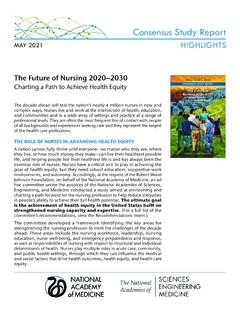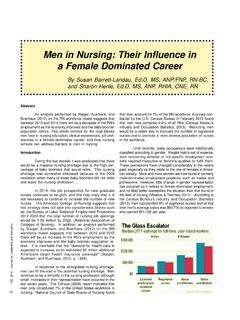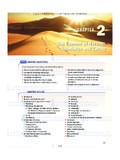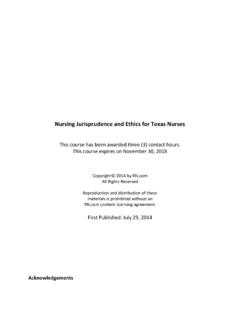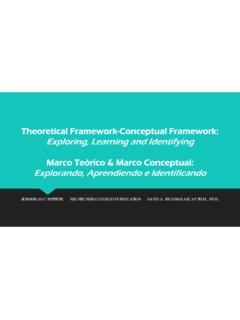Transcription of POTTER AND PERRY’S Fundamentals of Nursing - MIRACLE
1 Jackie CrispCatherine TaylorClint DouglasGeraldine RebeiroFundamentalsof NursingPOTTER AND perry S4th editionContributors xviiAustralian and New Zealand reviewers xxiPreface to the student xxiiText Features xxivAcknowledgements xxviiiPart 1 Evolving Nursing : Nursing and the healthcare environment1 Nursing today 2 Jill WhiteNursing defined 3 The history of modern Nursing 4 Florence Nightingale 4 Historical perspectives on Australian and New Zealand Nursing 5 Social, economic and political inf luences on Nursing 8 Health reforms 8 Nursing shortage 8 Evidence-based practice and Nursing research 10 Nursing as professional practice 10 Science and art of Nursing practice 10 Professional responsibilities and roles 11 Autonomy and accountability 11 Nursing competencies and standards 11 Career development 12 Education and its relationship to Nursing careers 14 Undergraduate education 14 Postgraduate education 14 Continuing and in-service education 14 Trends in Nursing 15 Nursing s impact on politics and health policy 162 The healthcare delivery system 19 Jill White and Frances HughesA brief history of the Australian healthcare system 20A brief history of the New Zealand healthcare system 21A national healthcare
2 System 22 Area health boards 22 Further reforms 23 Healthcare reform 23 Australian health systems and reform strategies 23 New Zealand health system and reform strategies 25 Nurses 27 Consumers 28 Healthcare services 29 Voluntary agencies 30 Common forms of care services 31 Rural and remote healthcare 34 Allied health services 34 Quality healthcare 36 Conclusion 363 Nursing models for practice 39 Alan PearsonIntroduction 40 Nursing s disciplinary focus 40 Theory 40 Components of a theory 41 Types of theories 41 Nursing models 42 Components of Nursing models 42 Historical perspective 43 Relationship of theory to the Nursing process and client needs 44 Interdisciplinary theories 45 Systems theory 45 Basic human needs 46 Health and wellness models 46 Stress and adaptation 46 Developmental theories 47 Psychosocial theories 47 Selected Nursing theories 47 Nightingale 47 Peplau s theory 49 Henderson s theory 49 Abdellah s theory 49 Levine s theory 49 Johnson s theory 49 Rogers theory 50 Orem s theory 50 King s theory 50 Neuman s theory 50 Roy s theory 51 Wat son s theor y 51 Benner and Wrubel s theory 51 Parse s theory 51 Applying the theories 531/08/12 4.
3 19 PMCONTENTSviFormulation of the Nursing diagnosis 95 Nursing diagnosis statement 96 Support of the diagnostic statement 98 Sources of diagnostic error 987 Planning, implementing and evaluating Nursing care 100 Bronwyn JonesEstablishing priorities 101 Critical thinking in establishing goals and expected outcomes 101 Goals of care 101 Expected outcomes 103 Guidelines for writing goals and expected outcomes 103 Planning Nursing care 105 Purpose of care plans 105 Care plans in various settings 105 Writing the Nursing care plan 106 Critical (or clinical) pathways 107 Protocols and standing orders 107 Critical thinking in designing Nursing i nter vent ion s 111 Types of interventions 111 Selection of interventions 112 Critical thinking and the implementation process 112 Reviewing and revising the existing Nursing care plan 112 Organising resources and care delivery 113 Implementing Nursing interventions 114 Achieving a client s goals of care 115 Communicating Nursing interventions 116 Critical thinking skills and evaluation of care 116 Evaluation of goal achievement 116 Care plan revision 118 Unmet goals 1188 Managing client care 121 Patricia Mary Davidson and Louise HickmanEvidence to inform Nursing practice 122 Preparing for complexity 123 Chronic care 124 Positive practice environments 124 The role of the registered nurse 125 Models of Nursing care 126 Models of Nursing care promoting wellness.
4 Autonomy and self-care 127 Building a Nursing team 127 Approaches to delivering Nursing care 128 Approaches to managing client care 129 Communication among the clinical team 131 Philosophy and vision for nurses managing client care 132 leadership skills for Nursing students 132 Measuring outcomes of Nursing care 132 Quality improvement processes for nurses 133 Nursing -sensitive indicators 13 4 Skill mix for the student nurse 134 The link between theory and knowledge development in Nursing 524 Critical inquiry and practice development 55 Brendan McCormack and Jackie CrispThree levels of Nursing inquiry 56 Inquiry involving critical engagement in everyday practice 56 Inquiry involving collaborative and ongoing evaluation of local practice 58 Inquiry involving Nursing research for advancement of Nursing knowledge 59 Practice development 63 Facilitation of practice development 65 Person-centredness and person-centred practice 66 Taking a PEEP 67 Taking a PEEP at people 67 Taking a PEEP at practice effects 68 Taking a PEEP at impact of environment on Nursing practice 68 Taking a PEEP at engagement through praxis 68 The complexity of Nursing inquiry 69 Part 2 Framing Nursing .
5 Critical processes in Nursing practice5 Critical thinking and Nursing judgment 74 Bronwyn JonesIntroduction 75 Critical thinking defined 75 Ref lection 75 Intuition 77 Clinical decisions in Nursing practice 77 Knowledge base 77 Development of critical thinking skills in Nursing 79 Critical thinking processes 79 Problem solving 79 Decision making 80 Clinical judgment model 81 Standards for critical thinking 82 Critical thinking synthesis 826 Nursing assessment and diagnosis 85 Bronwyn JonesA critical thinking approach to assessment 86 Organisation of data gathering 87 Data collection 88 Types of data 88 Sources of data 88 Methods of data collection 89 Interview 89 Nursing health history 90 Physical examination 93 Data documentation 93 Analysis and interpretation of data 631/08/12 4.
6 19 PMCONTENTSviiLegal relationships in Nursing practice 171 The law of contract 171 The nurse doctor relationship 172Do no resuscitate orders 173 Workload problems 174 Floating 174 Legal issues in Nursing specialties 175 Community health Nursing 175 Emergency department 175 Nursing children 175 Medical/surgical Nursing and gerontological Nursing 176 Critical care Nursing 176 Perioperative Nursing 176 Mental health Nursing 176 Hospital in the home and outreach services 177 Remote area Nursing 177 Professional involvement of nurses 17711 Legal implications in Nursing practice in New Zealand 179 Elaine PappsRegulation of Nursing in New Zealand 181 Continuing competence and annual practising certificates 181 Regulation of nurses from Australia or other countries 183 Competence notifications and review 183 Health notifications 183 Complaints about nurses 183 Health and Disability Commissioner 184 Health Practitioners Disciplinary Tribunal 184 Sources of law 185 Legal liability in Nursing 185 Treatment injury 185 Exemplary damages 185 Torts 186 Negligence 186 Standards of care 186 The need for careful documentation 186 Confidentiality and privacy 186 Obtaining consent 187 Use of human tissue and organ donation 188 Legal relationships in relation to employment 188 The law of contract 188 Legal issues in Nursing specialties 189 Nursing children 189 Mental health Nursing 190 Professional responsibility of nurses 19012 Communication 193 Jane Stein-ParburyCommunication and Nursing practice 194 The context of Nursing practice 194 Why nurses need to communicate 194 Healthcare environments and communication 196
7 Patient-centred communication 196 Focusing on solutions 197 Part 3 Positioning Nursing : professional responsibilites in Nursing practice9 Ethics and professional practice 138 Megan-Jane JohnstoneTerms and concepts 140 Ethics and morality 140 Bioethics 140 Nursing ethics 141 moral principles 141 moral rules 141 Rights 141 moral duties 142 The importance of ethics 142 moral conduct in Nursing 143 moral accountability and responsibility 143 Guides to ethical professional conduct 144 moral theories 144 Deontological ethics 144 Teleological ethics 145 Ethical principlism 145 moral rights theory 146 Virtue ethics 147 Cross-cultural ethics 147 Nursing codes of ethics 147 moral problems in Nursing 148 Nursing point of view 149 Distinguishing moral problems from other kinds of problems 149 Identifying and responding effectively to moral problems in Nursing 149 Processes of moral decision making 151 Bioethical
8 Issues in Nursing 154 Conclusion 15710 Legal implications in Nursing practice in Australia 160 Mary ChiarellaRegulation of Nursing 161 Legal and professional boundaries of Nursing 161 Sources of law 162 Legal liability in Nursing 162To r t s 16 3 Negligence 163 Nursing students 164 Standards of care 164 The need for careful documentation 166 Confidentiality and privacy 166 Assault and battery 167 The right of the patient to receive information 168 The patient s right to refuse treatment 169 Dying with dignity 169 Caring for the dying 171 Brain death and organ donation 731/08/12 4:19 PMCONTENTS viiiStandards 251 Types of documentation 251 Charting by exception 253 Case management and critical pathways 254 Common record-keeping forms 254 Home healthcare documentation 260 Long-term healthcare documentation 261 Computerised documentation 261 Reporting 262 Change-of-shift reports 262 Telephone reports 264 Telephone orders 264 Transfer reports 264 Incident reports 26515 Developing a culture of safety and quality 267 Geraldine RebeiroScientific knowledge base 268 Environmental safety 268 Providing a safe patient environment 269 Nursing knowledge base 273 Risks at developmental stages 273 Individual risk factors 275 Risks in the healthcare agency 275 Critical thinking synthesis 278 Safety and the Nursing process 278 Assessment
9 278 Nursing diagnosis 279 Planning 279 Implementation 282 Skill 15-1 Applying restraints 290 Skill 15-2 Seizure precautions 297 Evaluation 298 Part 4 Adapting Nursing : Nursing across the life span16 Health and wellness 302 Judy Yarwood and Karen BetonyHealth and wellness 303 Social determinants of health 305 Wellbeing and wellness 307 What determines health and wellbeing? 307 Promoting health and wellness 310 Preventive care 310 Health promotion at a community and population level 312 Cultural inf luences on health promotion 314 Promoting health in Australia and New Zealand 31517 Sociocultural considerations and Nursing practice 320 Leonie Cox and Chris TauaThe context of Nursing in Australia and New Zealand/Aotearoa 321 Effective communication 197 Communication and interpersonal relationships 197 Dynamics of interpersonal communication 197 Professional Nursing relationships 198 Levels of communication 200 Intrapersonal communication 200 Interpersonal communication 200 Small-group communication 200 Forms of communication 201 Verbal communication 201 Non-verbal communication 201 Developing communication skills 202 The need to unlearn previous communication patterns 202 Elements of professional communication 204 Courtesy and use of names 204 Privacy and confidentiality 204
10 Trustworthiness 204 Communication within the Nursing process 204 Assessment 204 Nursing diagnosis 207 Planning 207 Implementation 208 Evaluation 21413 Client education 217 Trish BurtonPurposes of client education 218 Maintenance and promotion of health and illness prevention 218 Restoration of health 218 Coping with impaired functioning 219 Teaching and learning 219 Role of the nurse in teaching and learning 220 Teaching as communication 220 Domains of learning 222 Cognitive learning 222 Affective learning 222 Psychomotor learning 222 Basic learning principles 223 Motivation to learn 223 Ability to learn 226 Learning environment 228 Integrating the Nursing and teaching processes 228 Assessment 228 Nursing diagnosis 230 Planning



